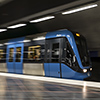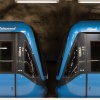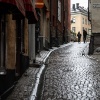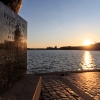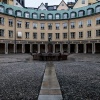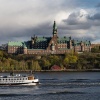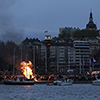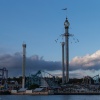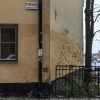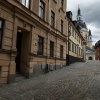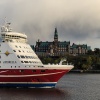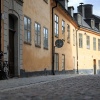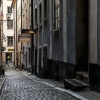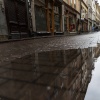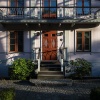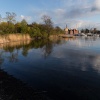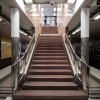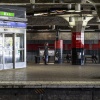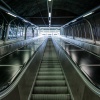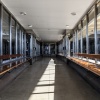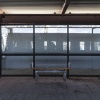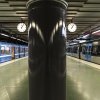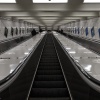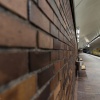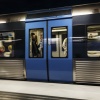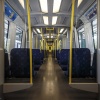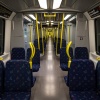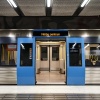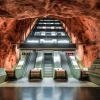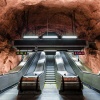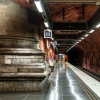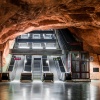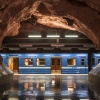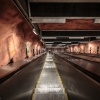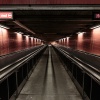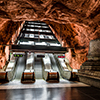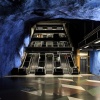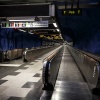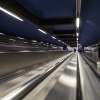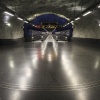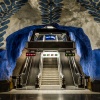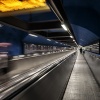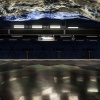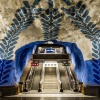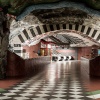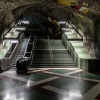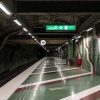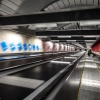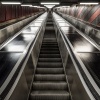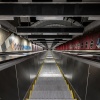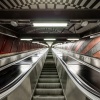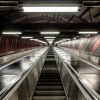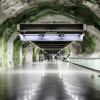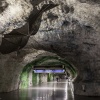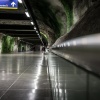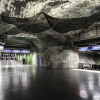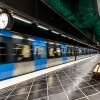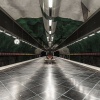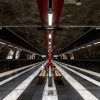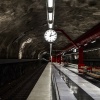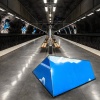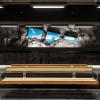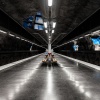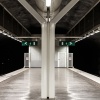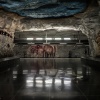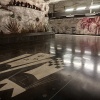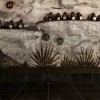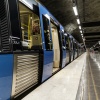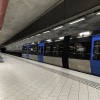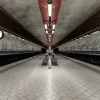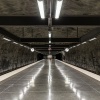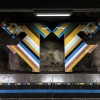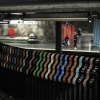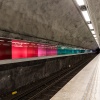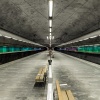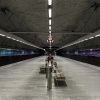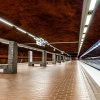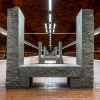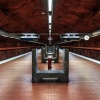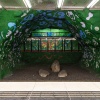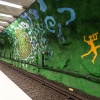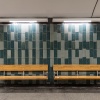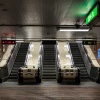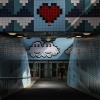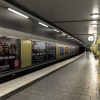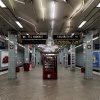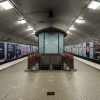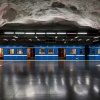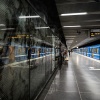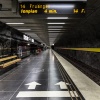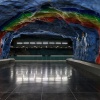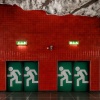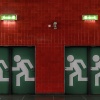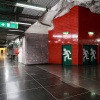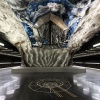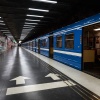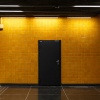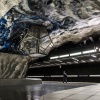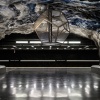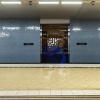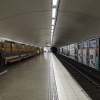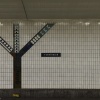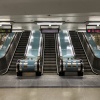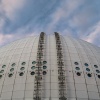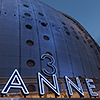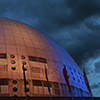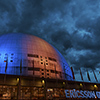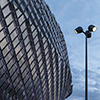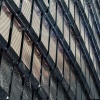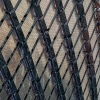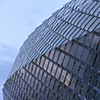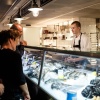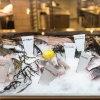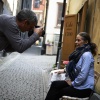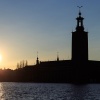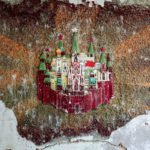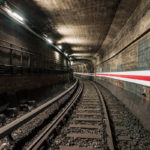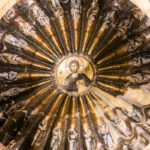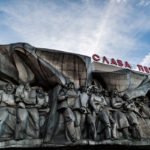The Tunnelbana Netherworlds of the Stockholm Metro
What do Ebba, Knut, Greta and Elvis have in common? Correct: all of them are true blue, come across the “wrong” side and run in Stockholm’s underground solely. But what sounds a bit like a scattered group of weirdoes is actually black-blue, made of metal and dedicated to transport people: the Tunnelbana, Stockholm’s metro, where every of its coaches has its own name. Quite likeable, isn’t it? But the real gem of the Swedish metropolitan underground is the variety of its stations since in particular the subterranean stops are brought to the fore artistically making every stage telling a very own optically exciting story.
If Tunnelbana would have been in operation already at Gaul times, then Obelix surely would have let himself got carried away with an “Asterix, these Swedes are crazy!” as for a country having right-hand traffic it is quite peculiar to board a metro leaving from the wrong side, that is left. For the Swedes that exception is so normal that they don’t think about it anymore, hence my questions why Tunnelbana runs on the left side only produce wide eyes, surprised faces and general bafflement.
A metro operating on the “wrong” side definitely shakes the world even for people having superior orientation abilities, hence the phrase “Well, just let us drive back again” quickly find its way into the vocabulary of a Stockholm trip. Said and done we – photographer and friend Torsten plus my humble self – get ourselves a 7-day ticket to explore the whole of Tunnelbana’s underground network the way we already did with Berlin’s BVG metros.
The above ground running track sections rather invite for a couple of yawns than being optically impressive. Only the cheerful laughter of a small boy making fruity word plays with Tunnel and Banana keep my motivation alive in the tediously world of 10-minute interval. But then things go subsurface and the rocky as well as edgy texture of the tunnel tubes instantly reveal why our Scandinavian neighbours call the Tunnelbana a “tunnel train”.
The Stockholm Tunnelbana is basically composed of three regular lines, that is blue, green and red, splitting up before reaching their actual terminus. After all the stations of the blue Line 10/11, in particular between Fridhemsplan and Kungsträdgården as well as the stops along its northern extension towards Hjulsta, like Tensta, Duvbo and Vreten, are the most impressive.
A true eye catcher is the Rådhuset station being painted with infernal red and its futuristically illuminated escalators reminding a bit of a journey through small intestine or a stairs reaching down to hell from the world of politics happening at town hall. Politics and hell, shamed be he who thinks evil of it ;-)
Next stunner on the blue line is T-centralen, the hub where all three Tunnelbanas meet each other. It’s a physical impossibility to capture this platform people-free unless you can call a faster grey filter your own. Only then you can capture the blue painted walls of platform of the lines 10 and 11 without having folks being in your images. However, in contrast to Berlin the Swedes don’t have a problem with photographers. While in Germany looks already start to kill only having a camera with me, Stockholmers are quite unafraid of a photographer’s presence. T-centralen impressively gives proof of that.
After the central station the Blå Linjen (blue lines) meets its eastern terminus at Kungsträdgården where at the way out east with 1:21 minutes to go you can find the supposedly longest escalator ride Stockholm’s Tunnelbana has on offer. Being decorated with columns and antique seemingly statues Kungsträdgården reminds a little of lost places like Pompeii or the ancient Rome.
Until Fridhemsplan, where you can change to Gröna Linjen (the green lines), lines 10 and 11 run subsurface and on the same track section. After a short daylight intermezzo the blue line submerges again and becomes interesting once more, at the latest at Huvudsta station and northwards, when symmetric platforms and their lines start to captivate your attention.
Most beautiful along the blue lines’ northern way are the stations Vreten and Tensta, where at the former stop cloudy sky and sunlight seem to break through the rocks in the shape of cubes. At Tensta the platforms are separated again from each other, which emphasises the rocky character of the station and its prehistoric appearance. Illuminated wall paintings catapult the beholder into Neanderthal times and prehistoric untouched Europe.
Coming from Stockholm’s west the stops along the green line are pretty functional for a long long time and things become optically interesting sporadically only after having reached Thorildsplan station, a part of the central track section. Despite being a station seeing daylight its entrance featuring early computer world motifs is worth seeing. Then the ride continues subsurface, but actually only the light installation at Hötorget is a must-see. On its way to Stockholm’s southeast the green line becomes a little dull again, but the last two stops of the 17 line, Bagarmossen and Skarpnäck, make amends.
The Bagarmossen station is dominated by a bright cool concrete face and futuristic lines of light. The wide stripe on the wall symbolising a colour gradient is the eye catcher. The stop after, Skarpnäck, is one of the green lines south-eastern terminuses and a reminiscence to the Viking history of Scandinavia as against a deep red background granite trilithons stand in alignment. They invite the waiting to sit down and read a book, torture their smartphones or drink a coffee before the next train leaves.
To some extent a drive on the Röda Linjen (red lines) from the southwest to the city centre is the same like the green line: deeeeeeeeeeadly boring. Only the Alby station shortly before arriving the line 13 terminus sticks out of the functional mishmash but fortunately things get better on the red line’s northern route towards Mörby Centrum.
Bergshamra is a vision in Scandinavian black, using contrasts mirroring gently in the wall wainscoting. As a special thing you can cruise along the red line in old Tunnelbana coaches mostly starting at Gullmarsplan station. Those elder coaches don’t have personal names though, are noisier and slow down more abruptly than the newer trains.
With the green line I took a ride more often than I would have preferred as despite having the correct direction and orientation on mind how to get to Old Town (Gamla Stan), I unwantedly went through Östermalmstorg and had to change to the opposite direction as I initially boarded the Tunnelbana on the “wrong” left side. Funny :-) Either way the coaches of Tunnelbana are quite clean not least because of the man cleaning up the grossest whenever a train reached one of the terminuses. That’s a book Berlin can definitely take a page from as just this morning on the way to work at M10 I came across a puddle of puke that got put in place already a couple of hours ago. Gross!
To some extent this Stockholm photo tour was weatherwise an up and down, hence ideal conditions to escape from by spending time in the metro. One evening again dramatic clouds flew over the Swedish capital. Fortunately at that time we were near the Tele2 arena and The Globe and could capture the atmosphere. Latter one, The Globe looked as if a giant R2-D2 was born emerging from Stockholm’s underground.
This little underground adventure got soothed by Hotel and Cafe Sven Vintappare in Stockholm’s Old Town where on every single day lovely Giulia gave us a great start into the day with an award-winning breakfast. Same goes to the crew of Restaurant B.A.R. cooking and grilling things spot-on from their awesome fresh fish counter, where you can chose your fish for a very good price. Top!
